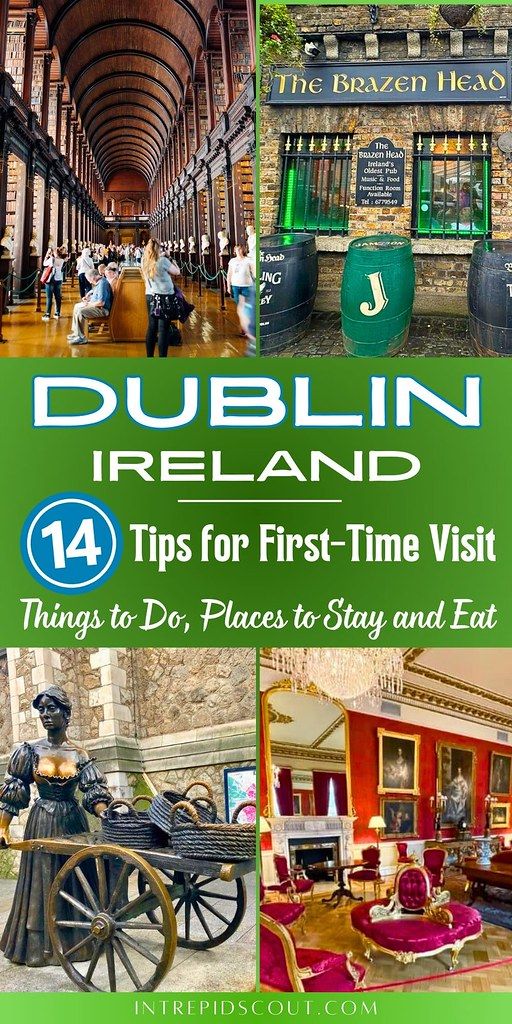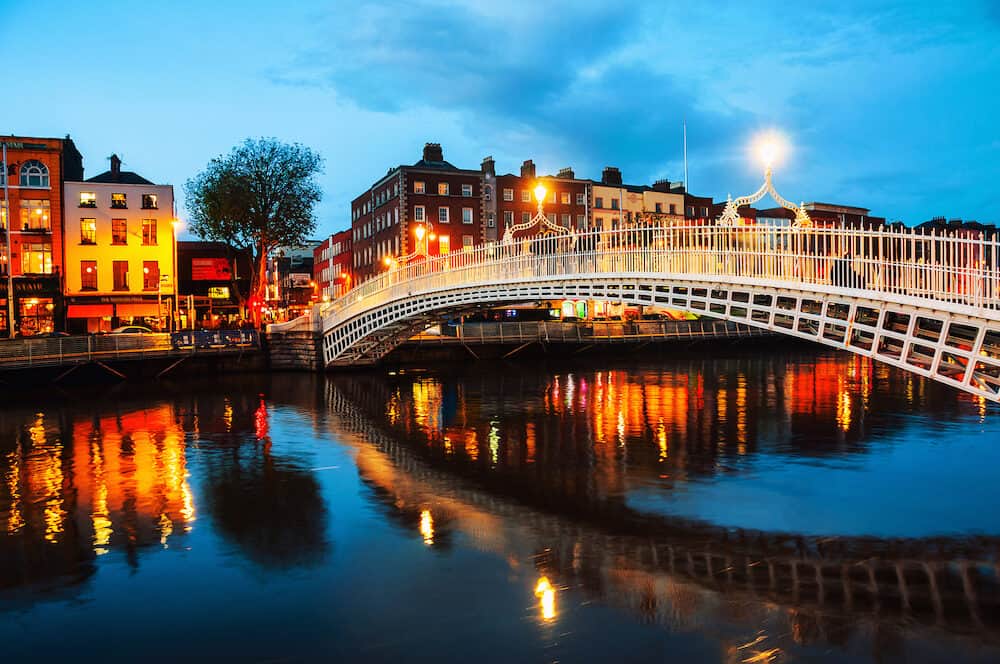
Dublin, a city where history whispers from cobblestone streets and laughter spills from cozy pubs, beckons travelers with an irresistible charm. From its literary giants and revolutionary past to its thriving modern culture and stunning Georgian architecture, the Irish capital offers a captivating blend of old and new. This comprehensive guide will equip you with everything you need to plan your unforgettable journey to Dublin, from uncovering its iconic landmarks to navigating its lively streets and savoring its unique atmosphere.
A Tapestry of Time: Dublin’s Rich History
To truly appreciate Dublin, a glimpse into its storied past is essential. Founded by Vikings in the 9th century as a trading post, Dublin quickly grew into a significant settlement. Its strategic location on the River Liffey made it a prize for various powers, leading to periods of Norse, Anglo-Norman, and English rule.

Related Articles about Dublin Calling: Your Ultimate Guide to Experiencing the Emerald Isle’s Vibrant Capital:
- Tokyo: A Journey Through Tradition, Innovation, and Unforgettable Experiences
- Yogyakarta: A Journey into the Soul of Java
- Bulgaria’s Crown Jewels: Unveiling the Best Hotels Amidst Ancient Wonders and Modern Comforts
- Poland’s Grand Stays: Unveiling the Best Hotels Amidst a Tapestry of History and Culture
- Montreal: A Tapestry of Culture, History, and Urban Charm
The Medieval period saw the construction of Dublin Castle, a formidable fortress that served as the seat of English power for centuries. The city’s layout, with its winding lanes and ancient city walls, still bears the imprint of this era. The Georgian era, from the 18th century onwards, ushered in an age of grand architecture, characterized by elegant townhouses with brightly colored doors that still adorn many of the city’s most picturesque squares.
Dublin has also been a crucible of rebellion and national identity. The Easter Rising of 1916, a pivotal moment in Ireland’s struggle for independence, took place in key locations across the city, notably the General Post Office (GPO). The subsequent War of Independence and Civil War cemented Dublin’s role as the heart of the new Irish state. This rich history is woven into the fabric of the city, evident in its museums, monuments, and the enduring spirit of its people.
Unmissable Dublin: Top Attractions
Dublin boasts an abundance of attractions catering to every interest. Here are some of the absolute must-sees:
-
Trinity College and the Book of Kells: Immerse yourself in academic grandeur at Ireland’s oldest university. Wander through the magnificent Long Room library, a breathtaking architectural marvel housing over 200,000 of the library’s oldest books. The undisputed star here is the Book of Kells, an illuminated manuscript of the four Gospels, dating back to the 9th century, renowned for its intricate artistry and vibrant colors.
-

Dublin Castle: Delve into centuries of Irish history at this iconic landmark. Explore the State Apartments, the Medieval Undercroft, and the Chapel Royal. The castle has witnessed coronations, parliamentary sessions, and countless pivotal moments in Irish history.
-
St. Patrick’s Cathedral and Christ Church Cathedral: Dublin is home to two magnificent medieval cathedrals, both offering a glimpse into the city’s religious and architectural heritage. St. Patrick’s Cathedral, the national cathedral of the Church of Ireland, boasts stunning Gothic architecture and is the burial place of Jonathan Swift. Christ Church Cathedral, Dublin’s older cathedral, features a beautiful crypt and impressive medieval architecture.
-
Temple Bar: While often crowded and touristy, a visit to Temple Bar is an essential Dublin experience. This vibrant cultural district is renowned for its lively atmosphere, traditional pubs, live music, and street performers. Explore its narrow lanes, enjoy a pint of Guinness, and soak in the quintessential Irish pub culture.
-
Guinness Storehouse: No trip to Dublin is complete without a pilgrimage to the home of Ireland’s most famous export. This multi-story attraction tells the story of Guinness, from its brewing process to its iconic advertising campaigns. The highlight is the Gravity Bar, offering panoramic 360-degree views of Dublin while you enjoy a perfectly poured pint.
-
Kilmainham Gaol: A poignant and historically significant site, Kilmainham Gaol offers a stark reminder of Ireland’s struggle for independence. This former prison held many Irish revolutionaries, including leaders of the 1916 Easter Rising. The guided tour is incredibly informative and moving.
-
National Museum of Ireland: Dublin is home to four branches of the National Museum, each offering a unique journey through Ireland’s past. The Archaeology branch showcases incredible artifacts from the Bronze Age to the Viking era, including the famous bog bodies. The Decorative Arts & History branch is located in Collins Barracks and explores Irish design and military history.
-
Grafton Street: A shopper’s paradise and a lively pedestrian street, Grafton Street is a hub of activity. Lined with high-end boutiques, department stores, and street performers, it’s a perfect place for a stroll, some people-watching, and perhaps a bit of retail therapy.
-
Phoenix Park: One of the largest enclosed urban parks in Europe, Phoenix Park is a verdant oasis offering respite from the city bustle. Home to Dublin Zoo, Áras an Uachtaráin (the President of Ireland’s residence), and herds of wild fallow deer, it’s ideal for leisurely walks, cycling, and picnics.
Navigating Dublin: Travel Tips for a Smooth Journey
To make the most of your Dublin adventure, consider these practical travel tips:
-
Currency: The currency in the Republic of Ireland is the Euro (€). While many establishments accept credit and debit cards, it’s always a good idea to have some cash on hand for smaller purchases or tipping.
-
Language: The official languages are Irish (Gaeilge) and English. English is widely spoken and understood throughout Dublin.
-
Tipping: Tipping is not as ingrained as in some other countries, but it is appreciated for good service. A 10% tip is customary in restaurants if a service charge isn’t already included. For taxi drivers, rounding up the fare is common.
-
Electrical Plugs: Ireland uses Type G electrical plugs (three rectangular pins). The voltage is 230V. You’ll need an adapter if your devices use a different plug type.
-
Best Time to Visit:
- Spring (April-May): Pleasant temperatures, blooming flowers, and fewer crowds.
- Summer (June-August): The warmest months with long daylight hours, perfect for exploring. This is also peak tourist season, so expect higher prices and more people.
- Autumn (September-October): Crisp air, beautiful fall colors, and a decrease in tourist numbers.
- Winter (November-March): Colder and wetter, but also the most affordable time to visit. Dublin’s festive Christmas markets and cozy pubs offer a unique charm.
-
Getting Around: Dublin is a walkable city, especially the city center. However, for longer distances, consider these options:
- Dublin Bus: An extensive network covering the entire city and surrounding areas.
- Luas: Dublin’s tram system, with two main lines (Green and Red) connecting key areas.
- DART (Dublin Area Rapid Transit): A coastal train line offering scenic journeys to charming seaside towns like Howth and Dún Laoghaire.
- Taxis/Ride-Sharing: Readily available, though can be more expensive.
- Leap Card: A reusable smart card for public transport, offering cheaper fares than paying with cash.
-
Embrace the Pace: Dubliners are known for their friendly and relaxed demeanor. Don’t rush; take your time to enjoy the atmosphere, strike up conversations, and savor the experience.
Where to Lay Your Head: Accommodation Options
Dublin offers a diverse range of accommodation to suit every budget and style:
-
Luxury Hotels: For a splurge, Dublin boasts world-class hotels like The Shelbourne, The Merrion, and The Westbury, offering opulent rooms, fine dining, and exceptional service.
-
Boutique Hotels: Discover charming and stylish boutique hotels like The Alex, The Davenport, and The Clarence, often located in converted Georgian buildings, offering a more intimate and personalized experience.
-
Mid-Range Hotels: A plethora of comfortable and well-located hotels fall into this category, such as Jury’s Inn, Travelodge, and Premier Inn, providing excellent value for money.
-
Budget-Friendly Options: Hostels are a fantastic choice for solo travelers and those on a tighter budget. Dublin has numerous highly-rated hostels, offering dorm rooms and private rooms, often with social events and a great atmosphere. Look for options like Generator Dublin, Jacobs Inn, or The Times Hostel.
-
Apartment Rentals: For longer stays or families, consider renting an apartment through platforms like Airbnb. This offers more space, privacy, and the option to self-cater.
Neighborhoods to Consider:
- City Centre (Southside): Ideal for first-time visitors, putting you within walking distance of most major attractions, shopping, and nightlife.
- Temple Bar: Lively and central, but can be noisy.
- Ballsbridge/Donnybrook: More upscale and residential areas, offering a quieter experience with good transport links.
- Portobello/Rathmines: Trendy neighborhoods with a local feel, good cafes, and independent shops.
The Emerald Isle’s Warm Welcome: Getting to Dublin
Dublin is well-connected to major international destinations, making it accessible for travelers worldwide.
-
By Air: Dublin Airport (DUB) is Ireland’s busiest airport and serves as the primary gateway to the city. Numerous airlines operate direct flights from Europe, North America, and other parts of the world.
- From the Airport to the City:
- Aircoach: A popular and efficient express bus service that runs frequently to various points in the city center.
- Dublin Express: Another express bus service with convenient stops in the city.
- Dublin Bus: The standard public bus service offers a more budget-friendly option but takes longer.
- Taxis: readily available outside the terminals.
- From the Airport to the City:
-
By Ferry: For travelers coming from the UK or France, ferry services are an option. Ferries arrive at Dublin Port, which is a short taxi or bus ride from the city center. Companies like Irish Ferries and Stena Line operate these routes.
-
By Train: If you’re traveling from other parts of Ireland, the train is a convenient option, with main stations like Heuston Station and Connolly Station in Dublin.
Beyond the City Limits: Day Trips from Dublin
While Dublin itself offers a wealth of experiences, the surrounding areas are equally captivating and easily accessible for day trips:
- Howth: A picturesque fishing village with a stunning cliff walk, fresh seafood, and a charming harbor. Accessible via the DART.
- Bray & Greystones: Coastal towns with beautiful beaches and scenic cliff walks, also reachable by DART.
- Wicklow Mountains National Park: Known as the "Garden of Ireland," this stunning park offers breathtaking landscapes, hiking trails, and historical sites like Glendalough. Tours are readily available.
- Newgrange and the Boyne Valley: Step back in time to explore prehistoric monuments, including the ancient passage tomb of Newgrange, a UNESCO World Heritage site. Tours are recommended for ease of access and information.
Dublin: A City That Stays With You
Dublin is more than just a collection of attractions; it’s an experience. It’s the warmth of a friendly conversation in a pub, the haunting melody of traditional Irish music, the smell of peat smoke in the air, and the stories etched into every building. Whether you’re a history buff, a literature enthusiast, a foodie, or simply seeking a city with soul, Dublin will undoubtedly capture your heart. So pack your bags, embrace the craic, and prepare to be enchanted by the vibrant spirit of Dublin. Your Irish adventure awaits!





